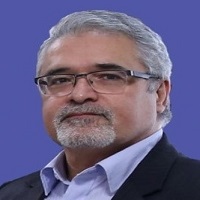During last decades, medical education has changed its outlook from “teaching as the knowledge convey” to deep learning and also revolving information from pure theory to applied and clinical acquaintance. A quick survey on modified medical curricula prepared by some international disciplines showed that they have faced remarkable challenges. Such challenges have emerged from alterations in needs of society especially in clinical practice, biotechnological advances, variation in personal demands, policy for development and the necessity to generate new educational policy (1). Now it is believed that medical students as stakeholder of educational programs are at the center of attention for such challenges. Aside from specific and general educational duties, they have to participate in many extracurricular activities such as evaluating teachers and the educational climate as an indicator for change, monitoring teaching and learning process sources of information in as an in-site evaluation in official approval process. In addition, medical students are supposed to get involved in medical research too; so it seems that there is a shared interaction between the medical students and the programs arranged for them that influence each other (2, 3). Students are considered as the sources for medical education research because they are in the first line of teaching and learning process and all programs are supposed to be successful if the end product of their schools is a knowledgeable one (4).
Assuming that students should be active in learning and teaching processes would be a challenge to their teachers and academic disciplines that make them to change many routine educational and research procedures. So it might be a difficult task for the teachers to accept or adapt with this situation especially for those who are involved in education planning and also have expertise in teaching. In other words they could not accept to act only as a facilitator and non-authoritative role and instead the students are active in learning, problem solving and establishing meaningful continuous learning procedures. In practice, the situation is more serious and medical students may play important and more active role in clinical practice such as preventing harm, ensuring patient safety, avoiding unsterile conditions, warning about missed medication and avoiding contacts with infected patients (5). Students may engage in extra-curricular activities even in the practical field (6). Thereby, curriculum planners should expect and provide plans for activities including social events such as sport contests and seminars that engage students in team work activities. Such activities would in turn help them to enjoy and cope up with the disciplines and work harder in the curricular context.
In addition, the changing societal demands, sub-cultural diversity and disease burden are among further challenges toward medical education that necessitate appropriate respond. In this regard, many approaches are on the desk of modern medical education. One of such strategies is to engage students in patient encounter at the very early stages of entering medical school, as known as early exposure to clinical atmosphere. This strategy might be helpful in familiarizing students with their future demands and duties. Moreover, this approach would be helpful in making the students more familiar with their future role, job and professional identity in the early years of their course. Continuing studies in providing the grounds for involving students in research about medical education is of great importance for medical schools (7). Considering the dramatic increase of medical schools throughout nation, we face a more serious and challenging situation in Iran. Medical students and graduates would be inviting more novel disciplines regarding the work and monitoring in a student based medical education that easily means the role of the Medical Students in education and research are believed to be more important than anytime else.
Acknowledgements
References
-
1.
Cruey G. The Roles of Students and Teachers: Finishing a Philosophy of. 2006, [2006; 27 Jun]. Available from: http://suite101.com/article/a-philosophy-of-education-part-iv-a4146.
-
2.
Hakamäki MA H, Österholm-Matikainen MA E, Mikkilä-Erdmann M, Kronqvist P, Koivisto A, Kääpä P. Medical students' conceptions about the role of medical education in supporting professional identity. University of Turku;
-
3.
Jameie SB. Student-based Research. Thrita J Med Sci. 2012;1(1):6-7.
-
4.
Forester JP, McWhorter DL. Medical students' perceptions of medical education research and their roles as participants. Acad Med. 2005;80(8):780-5. [PubMed ID: 16043536].
-
5.
Seiden SC, Galvan C, Lamm R. Role of medical students in preventing patient harm and enhancing patient safety. Qual Saf Health Care. 2006;15(4):272-6. [PubMed ID: 16885252]. https://doi.org/10.1136/qshc.2006.018044.
-
6.
Drouin J, Denis M, Nadeau L, Chenier Y. Medical students as teachers and role models for their future colleagues. Med Teach. 2006;28(7):618-24. [PubMed ID: 17594553]. https://doi.org/10.1080/01421590600922891.
-
7.
Wright S, Wong A, Newill C. The impact of role models on medical students. J Gen Intern Med. 1997;12(1):53-6. [PubMed ID: 9034946].
